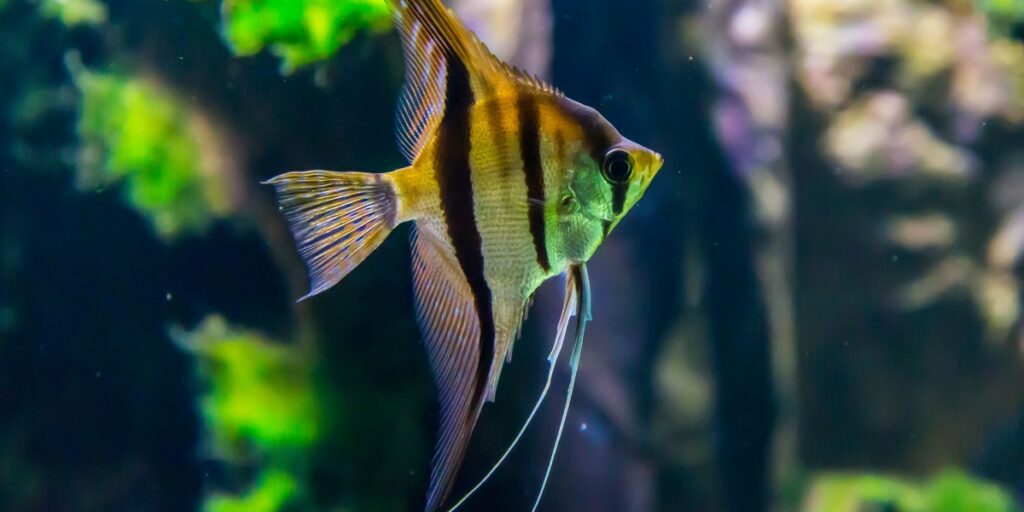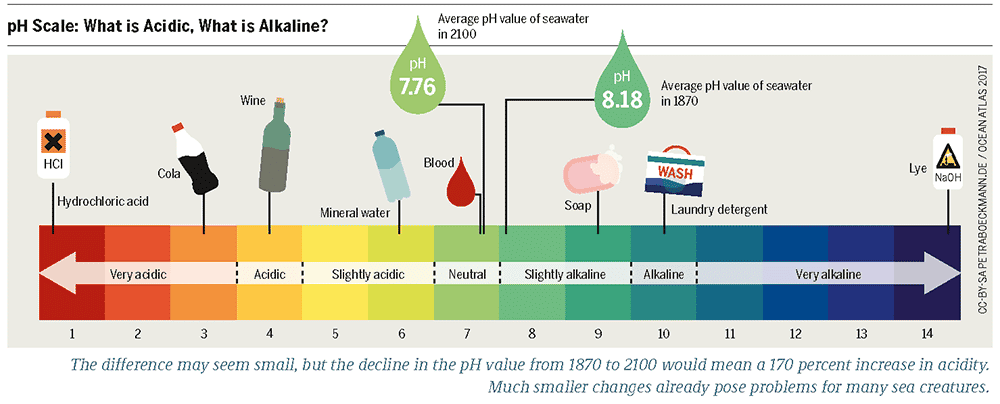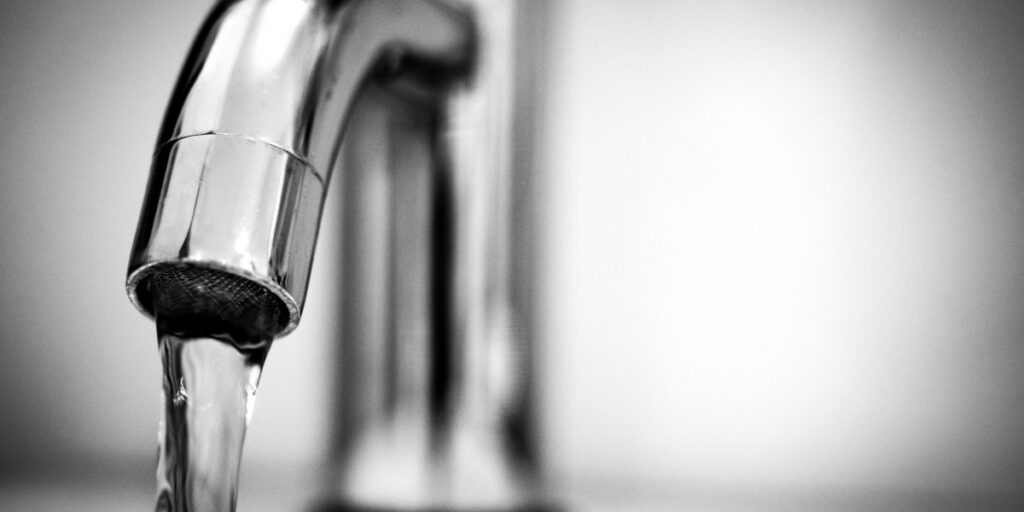Contemplating starting your aquaponic system? Then, you have come to the right place. Here you will learn some basics to help you maintain a healthy aquaponic system. For now, this post will focus on managing pH in aquaponic systems.
Table Of Contents
−pH is one factor contributing to a healthy and functional aquaponic system. Without maintaining pH at the right level, you will find it difficult to have plants, fish, and bacteria in the same system.

Keep in mind that each thrives best at a specific pH level. Therefore, if you have to consider aquaponic farming, you must be ready to address the pH issue well. But before we dive deeper and see how pH affects fish, bacteria, and plant nutrient absorption, let’s go through a few details about pH.

What is pH?
pH (power of hydrogen) is a logarithmic scale used to measure how acidic or basic a solution is based on the hydrogen ion (H+) concentration in a solution. The scale ranges from 0 to14. A pH value lower than 7 indicates that a solution is acidic. While a pH value equal to 7, the solution is neutral, and a pH value higher than 7 indicates that a solution is alkaline.
The presence of more hydrogen ions than hydroxide ions means the solution is acidic. Conversely, if a solution has more hydroxide than hydrogen ions, that solution is alkaline. If you want to learn more about acids and bases, consider going through the Arrhenius theory of acids and bases. It is an old theory that dates back to 1884.
Three Ways to Measure the pH Level of a Solution
- Using a pH testing kit for liquids with a pH color chart
- A paper strip coated in a pH is also be used with a pH color chart
- A digital pH meter can also be used to obtain the pH level of the solution automatically. It is also the most accurate to use a pH meter.
Managing pH Level in An Aquaponic System
Having three living organisms in the same system means you have to be extra cautious with the PH level; otherwise, you will end up with a non-functional system. For example, not maintaining the soil PH level can hurt the availability of the right nutrients to plants and the absorption of the nutrients by plants.
Most plant nutrients are available to plants within the range of 6.5 to 7.5. This is close to neutral. So if the pH is more alkaline or acidic, your plants will be deprived of key nutrients, hurting their growth.
For example, in very acidic soil, micronutrients such as calcium, magnesium, and phosphorus are not absorbed as the availability decreases. In very alkaline soil, micronutrients such as copper and zinc may become chemically unavailable.
Optimum pH Range for Fish
When it comes to fish, optimum pH depends on the type of fish you have in the system or planning to introduce into the system. Saltwater fish will thrive at an alkaline pH of 8.0 and above. Freshwater fish will do well in a slightly acidic pH (5.5 to 7.5).
The optimum pH range for fish is considered to be 6.5 to 9.0. Outside this range, if the pH is too low or high, the fish can become stressed, and there is a high risk of dying.
Optimum pH for Bacteria
Like fish, every microorganism has its optimum PH value. Often, most bacteria will thrive well between 6.5 to 7.0, with some bacteria doing well in very acidic solutions.
It is best to maintain a pH range of 6.5 to 7.5 in aquaponic systems.
Carbonate Buffer and Water Hardness
It is good to note that water hardness determines the buffering capacity of water and affects the pH level of the water in the aquaponic system. The buffering capacity is the ability of the water to maintain a stable pH despite small changes such as the addition of bases or acids.
Using distilled water is the right approach as this eliminates the presence of dissolved mineral salts which impact the pH level of the water. Water hardness describes the concentration of dissolved mineral salts in the water. So, the higher the concentration of the minerals, the harder the water is and vice versa.

Types of Water Hardness
- Carbonated hardness (KH): Refers to the water’s buffering capacity or alkalinity.
- General hardness (GH): Refers to the concentration of magnesium and calcium ions.
The carbonate hardness contributes greatly to determining the buffer potential of the aquaponic system to stabilize the pH. Buffers are essential to prevent an abrupt change in the pH level, which can be fatal to the fish in the system.
Buffers also play a crucial role in the health of bacteria available in the system. A very low carbonate hardness could result in an extremely low pH which will result in the death of most bacteria.
For an aquaponic system, the best KH level is anything above 4.0, ensuring a high buffer potential is maintained for a more stabilized pH.
Why pH In Aquaponic Systems Fluctuate
We have split this into two categories. What results in pH increase, and what leads to pH decrease.
pH Increase
The following will increase the pH level:
- Carbonate buildup
- Grow media used
- The material used to the take it beds
Note that a well-established bacteria colony can eventually reduce pH by preventing carbonate accumulation via nitrifications.
A very high pH hurts plant growth and results in poor fruit and flower development.
pH Decrease
- The nitrification process is the primary reason for low acidity in aquaponic systems.
- The type of plant been grown is also another reason and
- The material used to construct the aquaponic system.
Note that a low pH will significantly affect the growth of fish and bacteria within the system.
Adjusting pH In Aquaponic Systems
Fortunately, there are ways to adjust pH in aquaponic systems.
- When the pH is too low:
Add calcium carbonate and potassium carbonate in equal amounts, and then add the mixture to the water. Why use carbonate? This is because they are not caustic and will add strength to the carbonate buffer. You can also use simple hydroxides such as sodium hydroxide to raise the pH level of the water.
- When the pH Is Too High:
- Add phosphoric acid. This acid is safe and helps boost the level of phosphate plants need in their development.
- Use reverse osmosis (RO) filter. This filter lowers pH by removing carbonates from the water, resulting in pure, carbonate-free water with a reduced pH.
- Never use citric acid to lower pH. It is anti-bacterial and acts as a herbicide. Also, never add vinegar; it is too weak.
Conclusion
One secret to maintaining a healthy aquaponic system is monitoring the pH level and making the necessary adjustments on time. Monitoring pH level allows you to make gradual changes. Waking up one day and adjusting your pH level might hurt any of the living elements in your system. Instead, try to maintain a system within a pH range of 6.5 to 7.5.
Reference
Aquaponics Exposed. (2016, October 29). pH Levels In Aquaponics – Aquaponics Exposed. Retrieved from https://aquaponicsexposed.com/ph-levels-in-aquaponics/
Bernstein, S. (2017, July 22). Managing pH in Aquaponic Systems. Retrieved from https://www.maximumyield.com/managing-ph-in-aquaponic-systems/2/1208
Fundamentals of Environmental Measurements. (n.d.). pH of Water – Environmental Measurement Systems. Retrieved from https://www.fondriest.com/environmental-measurements/parameters/water-quality/ph/
Hu, L. (November). Just the pHacts: pH and Aquaponics – Project Feed 1010. Retrieved from https://www.projectfeed1010.com/blog/2016/11/14/just-the-phacts-ph-and-aquaponics/
Lovejoy, R. (2012, October 29). How Does pH Affect Plants? Retrieved from https://homeguides.sfgate.com/ph-affect-plants-49986.html
Nutrient Stewardship. (n.d.). Soil pH and the Availability of Plant Nutrients | Nutrient Stewardship. Retrieved from https://www.nutrientstewardship.com/implementation/soil-ph-and-the-availability-of-plant-nutrients/
Sawyer T. (2016, May 12). pH and Water Hardness in your Aquaponics System. Retrieved from https://www.theaquaponicsource.com/blog/ph-and-water-hardness-in-your-aquaponics-system/
Storey, N. (2017, August 11). How to Safely Lower pH in Aquaponics – Upstart University. Retrieved from https://university.upstartfarmers.com/blog/how-to-safely-lower-ph-in-aquaponics

Jay
Jay is a health and wellness enthusiast with expertise in water quality and nutrition. As a knowledgeable advocate for holistic well-being, Jay successfully manages Type 2 Diabetes through informed lifestyle choices. Committed to sharing reliable and authoritative insights, Jay combines firsthand experience with a passion for enhancing health."
